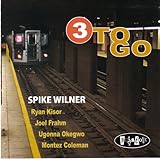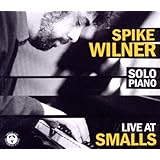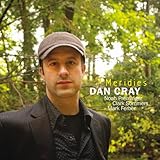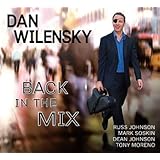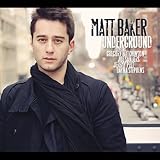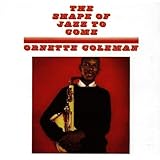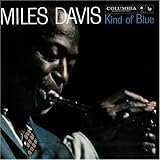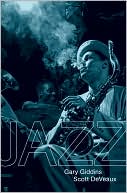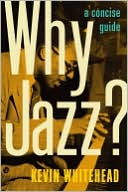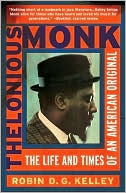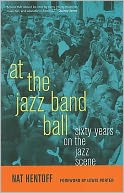This is "Hits by Brits" Part 2, in which I continue my survey of my disc collection and offer up as many of my jazz CDs recorded by British musicians, mostly on labels that are a bit obscure here in the U.S. but obtainable with a small amount of effort.
I should point out that by listing them I am in fact endorsing them as CDs of my liking, some more than others, but all of it music I enjoy listening to. My comments are meant to give a sense of where they fall on a continuum from "in the pocket" or the more straight-ahead, to the increasingly less inhibited, freer style of jazz today. Again, I am mostly about acoustic music so there is not much if any electronica.
So here are today's CDs:
 Django Bates -- a sublime pianist in his own group or with others.
Django Bates -- a sublime pianist in his own group or with others. Beloved Bird (Lost Marble 2010) --- really great piano interpretations of Bird
Like Life -- The Jazzpar Prize (Storyville 1997)--With the Danish Radio Jazz
Orchestra
Autumn Fires (and Green Shots) (Winter and Winter 2005) -- Soulful solos
Nikki Iles -- See my earlier blog raving about her play. Good for those who like modernists that are close
to the tradition. Also her music with Martin Speake is superb.
 Everything I Love (Basho Records 2003) -- Great title for my feelings on her
Everything I Love (Basho Records 2003) -- Great title for my feelings on hermusic.
Hush (2012 Basho Records) -- Trio with Rufus Reid and Jeff Williams. Award
winning potential.
Portico Quartet -- Not your traditional quartet even with sax, piano, drums and bass. Very interesting, especially the hang drum, and mellow listening. Distinctive harmonies, atmospheric, original.
Isla (Real World Records 2009) -- Lovely, mellow listen
Portico Quartet (Real World Records 2012) -- Ethereal, unique sounds.
John Law -- I wrote a long piece on Law and his superb piano playing. Get any or all of his CDs. they are
beautful.
The Art of Sound (33Records2007) -- Piano trio, !st in the series of the same name.
The Ghost in the Oak (33Records 2008) -- Solo piano, 2nd in his Art of Sound project
Chorale (33Records 2008) --Solo piano. 3rd in his Art of Sound project
Congregation (33Records 2009) -- Piano trio, 4th in the Art of Sound project
 This Is (33Records 2011) -- Duo piano music with Mark Pringle
This Is (33Records 2011) -- Duo piano music with Mark PringleThree Leaps of the Gazelle (33Records 2012) -- Piano trio.
Ivo Neame Trio -- Yet another young and upcoming pianist leading his trio. Now
more known as a member of Phronesis (see below).
Swirls and Eddies (Loop Records 2007) -- Nice recording, a bit out of the box
but nothing too out there. Lots to enjoy.
Phronesis -- I have four discs, all with Jasper Hoiby on bass, and the last three with
Ivo Neame on piano. Hoiby's lead could make them a Dutch trio I suppose.
Strong modern take on the integrated piano trio, a la Bad Plus, E.S.T., or Trichotomy. Solid play, very
nice
Organic Warfare (Loop 2007) -- Magnus Hjorth on piano for this first one. Solid start, interesting
soundscapes.
Green Delay (Loop 2009) -- With Neame on piano, Intense bass play, strong use of each player,
complex modernity.
Alive (Loop Collective/Edition Records 2010) -- With this one the band reaches a high level of creativity
improvisation, and lyricism passed among the three players.
Walking Dark -- (Edition Records 2012) Brand new and excellent, recognizable sound of lyricism,
innovation, and groove. Modern creative piano trio.
Francesco Turrisi - An Italian pianist of great taste and since he has been a resident of Dublin since 2006,
I have noted him here. Classical training shines through two lovely, chamber jazz discs
Si Dolce e il Tormento (Diatribe Recordings 2008) -- Trio plus clarinet/bass clarinet. Lovely, gentle
sound.
"Fotografia" (Diatribe Recordings 2011) -- Pure trio music this time, same lilting melodies and relaxed
sounds, very ECM-like.
Alan Barnes -- A traditional alto and baritone sax player out of the mold of hard bop and the "Blue Note"
 sound. Some of his best work is done jointly with great tenor players, and I
sound. Some of his best work is done jointly with great tenor players, and I have three recommendations:
Birds of a Feather (Woodville Records 2008) -- with Greg Abate on tenor and
alto, and a great rhythm section, this quintet excels with a set of originals plus
Dizzy's "Be-Bop" and Todd Dameron's "Hot House." For lovers of the
straight-ahead sound.
Hi-ya (Woodville 2010) -- An outing with Scott Hamilton in tenor, and a great
rhythm section that blowsa hot with eight songs including a few by Johnny
Hodges and Duke Ellington. Fabulous outing.
The Art Trip: The Music of Art Pepper -- Brand new disc, a solid interpretation and not imitation
Acoustic Triangle -- Drumless trio -- Tim Garland on saxes and bass clarinet, Gwilym Somcock on piano,
and Malcolm on bass. Four CDs I know of, last in 2008, so perhaps Garland and Simockc are on to
other projects. This group has melody, some spikiness at times, and great energy. Not a simple listen but
worth the effort.
Catalyst (Audio-B Ltd. 2003 -- according to the label "melodic acoustic jazz with European classical
influences.Nice non-traditional melodies.
 Resonance (Audio-b LTD 2005) -- continuation of the sound, watch for
Resonance (Audio-b LTD 2005) -- continuation of the sound, watch forSimcock on french horn!
Julian Siegel -- Multi-reedist modernist. Lovely sound, melodies are there but not for those looking for traditional songs.
Urban Theme Park (Basho Records 2010) -- Quartet with Liam Noble on
piano. I like this very much, unusual but not exotic
Live at the Vortex (Basho Records 2008) -- Also nice, double CD with
stretched out sound of a trio, has that fresh live feel
Matthew Bourne -- Pianist with lovely ideas and touch.
Montauk Variations (Leaf 2012) -- Solo piano with some cello play. Beautiful meditations,
delicate sound, a winner
Bobby Wellins --One of the rocks of the post bop era, a classic sound and interpreter in all settings
Time Gentlemenn Please (Trio Records 2011) -- Quartet of some great standards, pure music for
lovers of the traditional sounds.
Paul Clarvis/Liam Noble Piano and Drum pairing
Starry Starry Night -- very pretty duos on music from Scott Jplin to Paul Simon.
Gordon Beck, Stan Tracey, Tubby Hayes, Bobby Wellins were all covered in detail in a post of January 3 on this blog. John Taylor, piano; Martin Taylor, guitar; Kenny Wheeler, trumpet; Andy Shephard, sax; are not inlcuded in the lists because I believe they are on labels more readily available here and are known more widely. All are terrific, and Wheeler's new big band CD is great.
So, who did I leave out that you would like people to know about? Or which disc did I neglect by one of those listed? Please share your thoughts with others.



















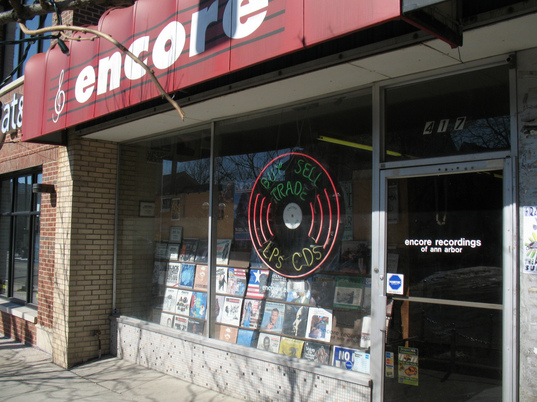




 "Redwoods" (AUM Fidelity 2008) was Yamamoto's fifth release with her long standing trio. The album provides the same richness a her latest, with Yamamoto's distinctive melodies always inventive, with stong undertones of the blues, folk, or jazz throughout, and a steady hand on the tiller that never goes too far out. Her backing of Takeuchi and Ambrosio is similarly just as solid, with Takeuchi providing as necessary a strong pulse or a discreetly free-ish one with colorings from his kit. Ambrosio again is an anchor playing a steady beat, conterpoint, or memorable solos as reequired, all with a woody, resonant sound. This disc opens quickly with a rollicking "This Is An Apple," and ends similarly with the upbeat "Dear Friends." In between are a rich confection of wistful ballads, boppish melodies, and bluesy riffs that involved the entire trio in the defivery of a wonderfully colorful and full-bodied recording.
"Redwoods" (AUM Fidelity 2008) was Yamamoto's fifth release with her long standing trio. The album provides the same richness a her latest, with Yamamoto's distinctive melodies always inventive, with stong undertones of the blues, folk, or jazz throughout, and a steady hand on the tiller that never goes too far out. Her backing of Takeuchi and Ambrosio is similarly just as solid, with Takeuchi providing as necessary a strong pulse or a discreetly free-ish one with colorings from his kit. Ambrosio again is an anchor playing a steady beat, conterpoint, or memorable solos as reequired, all with a woody, resonant sound. This disc opens quickly with a rollicking "This Is An Apple," and ends similarly with the upbeat "Dear Friends." In between are a rich confection of wistful ballads, boppish melodies, and bluesy riffs that involved the entire trio in the defivery of a wonderfully colorful and full-bodied recording. 


